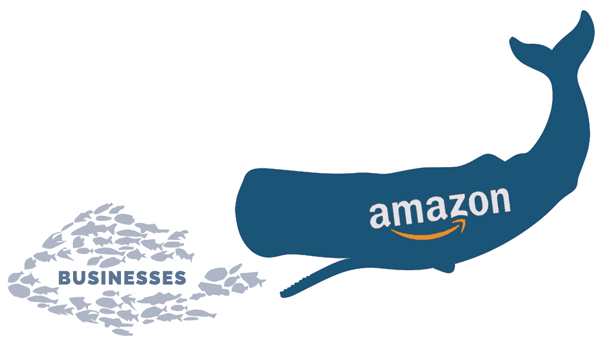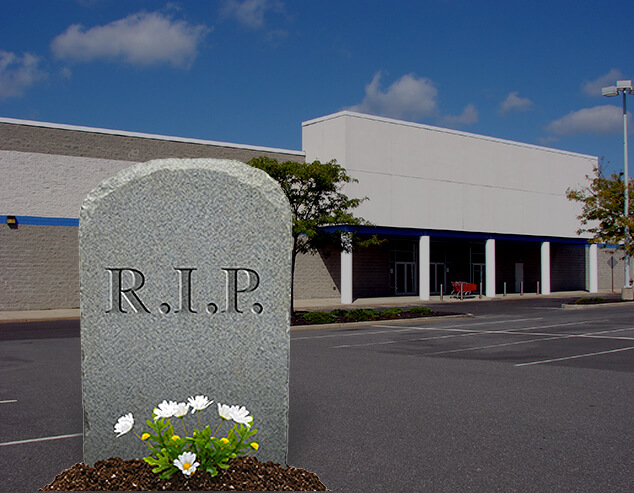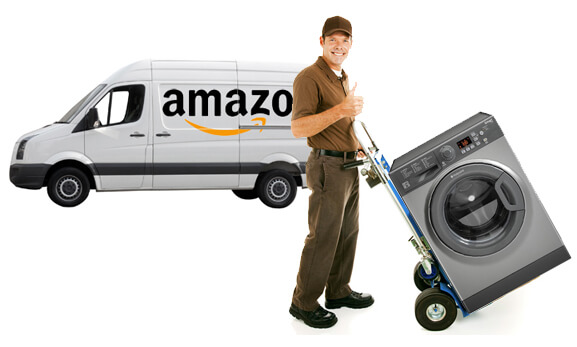
Nowadays is there really a difference between brick-and-mortar and online retail businesses? Even if we plan to go shopping at a brick-and-mortar store (it is easier to try on clothes in person than via virtual reality) don’t we often first check out the store’s offerings online?
And what does this mean for the future of brick-and-mortar retail businesses? Will everything soon be online?
Of course, balanced against this concern is Amazon’s intended purchase of Whole Foods. Yet it is still unclear whether Amazon’s goal is simply to use the Whole Foods locations as warehouses for quicker delivery of Amazon goods or to keep Whole Foods as brick-and-mortar stores with its inventory augmenting AmazonFresh.

Li Yuan reports in the July 13, 2017, Wall Street Journal article “Why You Should Look to China for the Future of Retail”:
The retail industry is in a state of flux. American retail stores are shutting at a record pace. Amazon.com is experimenting with new formats for brick-and-mortar stores and its $13.7 billion deal for Whole Foods Market is seen as a sign of accelerating change.
For a glimpse of the future, U.S. retailers and e-commerce companies should take a look at China, which is already a big test lab.
Chinese companies have been busy weaving together the online and offline worlds, trying for an ever more seamless fit. Convenience stores that have no sales assistants or cashiers are popping up in big cities.
An example of cashier-less stores is discussed in Takashi Mochizuki’s December 12, 2016, Wall Street Journal article “Panasonic Takes Item Out of Bagging Area: Human”:
Panasonic Corp. is introducing convenience-store checkout machines that can scan and bag items on their own, joining Amazon.com Inc. in the push for more retail automation.
And on the Amazon front …
Amazon announces another possible game-changer — “The Hub”
Ingrid Lunden reports in her July 27, 2017, TechCrunch.com article “Amazon launches ‘The Hub’, parcel delivery lockers for apartment buildings”:
Today, Amazon quietly unveiled a new service called The Hub, lockers designed to be installed in multi-tenant dwellings so that residents can receive bulky packages and pick them up at flexible times. Key to the service is that Amazon is offering it as a delivery option for packages from anyone, not just Amazon and its affiliates.
“You can pick up any package, from any sender, any retailer, at any time,” a promotional video on the site notes as the video scrolls through packages not just from Amazon and Zappos (owned by Amazon), but also unnamed retailers, and maybe your granny.
Besides possibly helping other online retailers, this new Amazon feature might help offline retailers deliver packages. Or it might hurt offline retailers even more than Amazon currently does.
Humorous note: The New Yorker issue of August 7 & 14, 2017, had a cartoon depicting a young husband and wife standing with their dog at their outdoor mailbox. The couple watches a delivery person approach a neighbor’s house while an Amazon delivery van is parked in front of the house.
The cartoon caption reads:
I guess we’ll know ol’ Mr. Willis is dead when the Amazon packages stop arriving.
Possible demise of brick-and-mortar stores

The possible demise of brick-and-mortar stores has dire consequences for various businesses of all sizes including mall operators.
Ben Eisen reports in the July 26, 2017, Wall Street Journal article“Amazon Market Cap Tops Half a Trillion”:
Amazon’s gain has been brick-and-mortar retailers’ fall, with shares of companies like Target and Macy’s falling sharply this year.
And for small stores the impact may mean going out of business.
Jennifer Levitz reports in her July 19, 2017, Wall Street Journal article “Country Stores, a New England Institution, Are Going Dark:
For 203 years, the Francestown Village Store served its tiny New Hampshire town, selling everything from fresh-baked bread and live fishing bait to winter hats and groceries while offering a place where residents could gather and gossip.
But the institution, formerly known as the Long Store, closed earlier this month and will be auctioned Thursday by the bank that holds the mortgage on it.
The most recent proprietors, who owned the general store since 2013, say they struggled to make ends meet, hit by changing consumer habits such as online shopping and residents who increasingly commute out of the town of 1,600 for work and shop at large grocery stores on their way home.
This change in consumer habits is troubling for both small businesses and for large businesses such as Sears.
Suzanne Kapner and Laura Stevens reported in their July 20, 2017 Wall Street Journal article “Sears to Sell Kenmore Brand on Amazon”:
Sears Holdings Corp. said Thursday it will start selling its Kenmore appliances on Amazon, loosening its grip on one of its historic product lines and becoming the latest big American brand to capitulate to the online-retail giant.

Click here to read “Standing Up to the Amazon Behemoth.”
What does Sears selling on Amazon mean?
Yaryna Serkez and Theo Francis report in the July 20, 2017, Wall Street Journal article “A Tale of Two Retailers”:
Sears has closed hundreds of stores, triggering anxiety about the once-dominant retailer’s future. Amazon has been on a building binge, is set to swallow Whole Foods and now, will sell Sears appliances online.
Eight years ago, Sears Holdings Corp. ran more than 2,000 Kmart and Sears stores in all 50 states. (The retailers merged in 2005.) Florida alone had 112 Kmarts. Amazon.com Inc., already an online powerhouse, had a handful of warehouses.
Since 2009, more than half of the Sears and Kmarts in the Midwest have closed, and nearly half in the South are gone. Illinois alone has lost 43 Kmarts; Alabama’s 14 Sears stores have dwindled to three.
Meantime, Amazon has surged from 17 warehouse locations to more than 260 in 30 states, nearly half of which it opened in 2015 and 2016. (Sears had 31 domestic distribution centers at the end of January, down from 39 in 2009.)
Amazon has been opening smaller distribution centers, including hubs for its two-hour delivery service, along with the giant distribution and sorting facilities it previously emphasized. And Amazon is poised to add 445 stores when it acquires Whole Foods later this year.
Historical reference: Who remembers the ubiquitousness of the Sears mail-order catalog? In the musical THE MUSIC MAN, the song “Wells Fargo Wagon” recreates the excitement of the delivery of catalog goods to small towns. Here is the song shared by niley4eva2012 on YouTube:
And there there is the impact on malls.
James F. Peltz and Alexa D’Angelo reported in the June 13, 2017, Los Angeles Times article ”The Internet is mauling America’s malls. Is your favorite retailer closing its doors?”:
Consumers’ increasing enthusiasm for buying online claims more retail victims every week.
On Monday, children’s clothing seller Gymboree Corp. filed for bankruptcy protection and said it intends to close some of its 1,281 locations.
Last week, the parent company of Ann Taylor, Lane Bryant and other women’s clothing stores said it plans to close up to 667 locations in the next two years to slash costs.
The week before that, luxury brand Michael Kors Holdings said it expects to shut 100 to 125 out of its 827 stores to focus on expanding in Asia and to adjust to the mushrooming growth of online shopping.
It’s all part of one of the biggest disruptions in shopping patterns since the mail-order catalog was invented.
The communal shopping experience is fast giving way to the convenience of clicking on a virtual cart on an electronic screen. Amazon.com and other Internet titans have reaped the benefit as conventional brick-and-mortar merchants report that shopper visits are plunging.
UPDATE from Ruth Simon’s August 7, 2017, Wall Street Journal article
”Brands Strike Back: Seven Strategies to Loosen Amazon’s Grip”:
As Amazon.com Inc. tightens its grip on retail sales, a growing number of brands are pushing back by championing local retailers.
Some manufacturers are enforcing minimum advertised prices to make it harder for online sellers to undercut local merchants, while others give local stores first dibs on new products or funnel customers from their own websites to local outlets.
“The pendulum has swung,” said Rich Tauer, president of Quality Bicycle Products, a Bloomington, Minn., bicycle wholesaler that won’t sell to Amazon. The company’s sales representatives push brands that support local retailers by restricting advertised prices and enforcing restrictions on where products are being sold.
The conundrum: Every time we buy something online from Amazon or a similar online retailer we may be hammering another nail into the coffin of brick-and-mortar stores. But when we need something in two days and our local stores don’t carry the item, what are we to do?
Digital tip: If you want to utilize TV display screens to interact with customers in brick-and-mortar stores, check out getting a free demo of Enplug digital signage software.